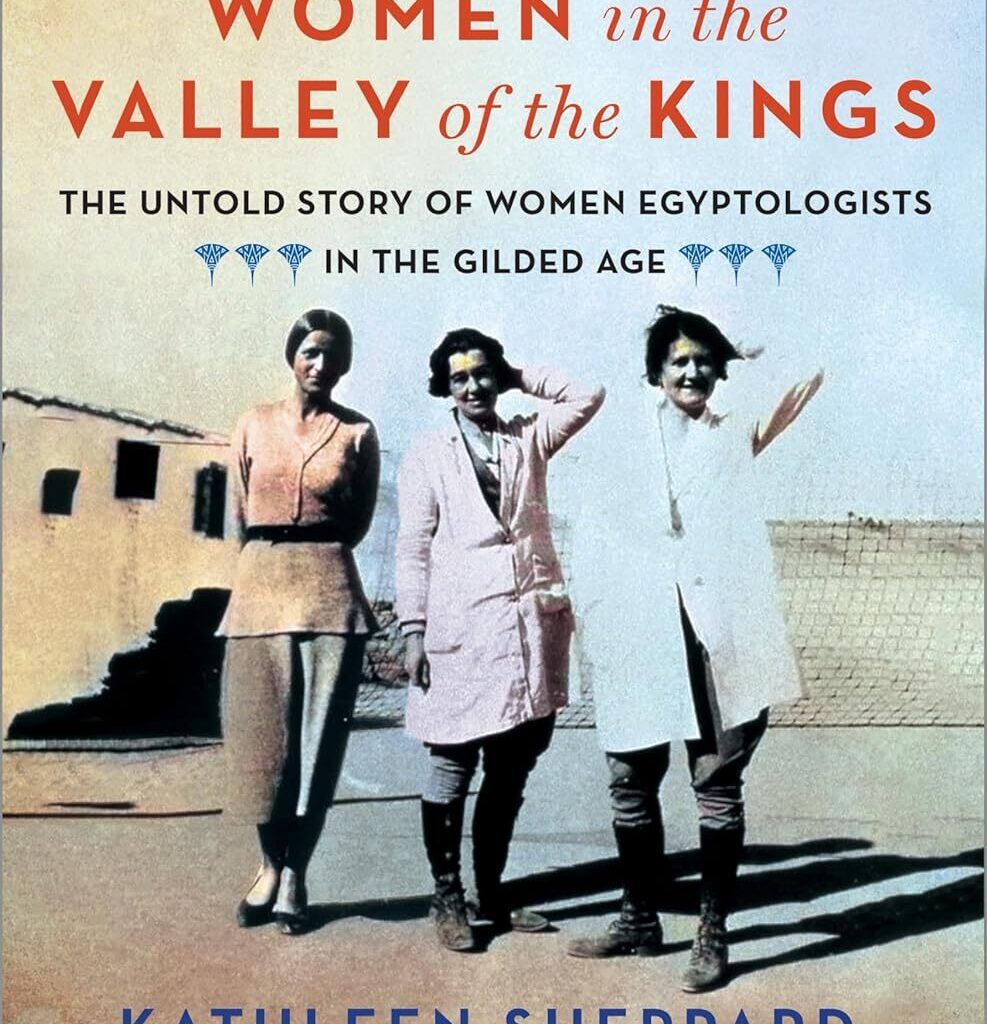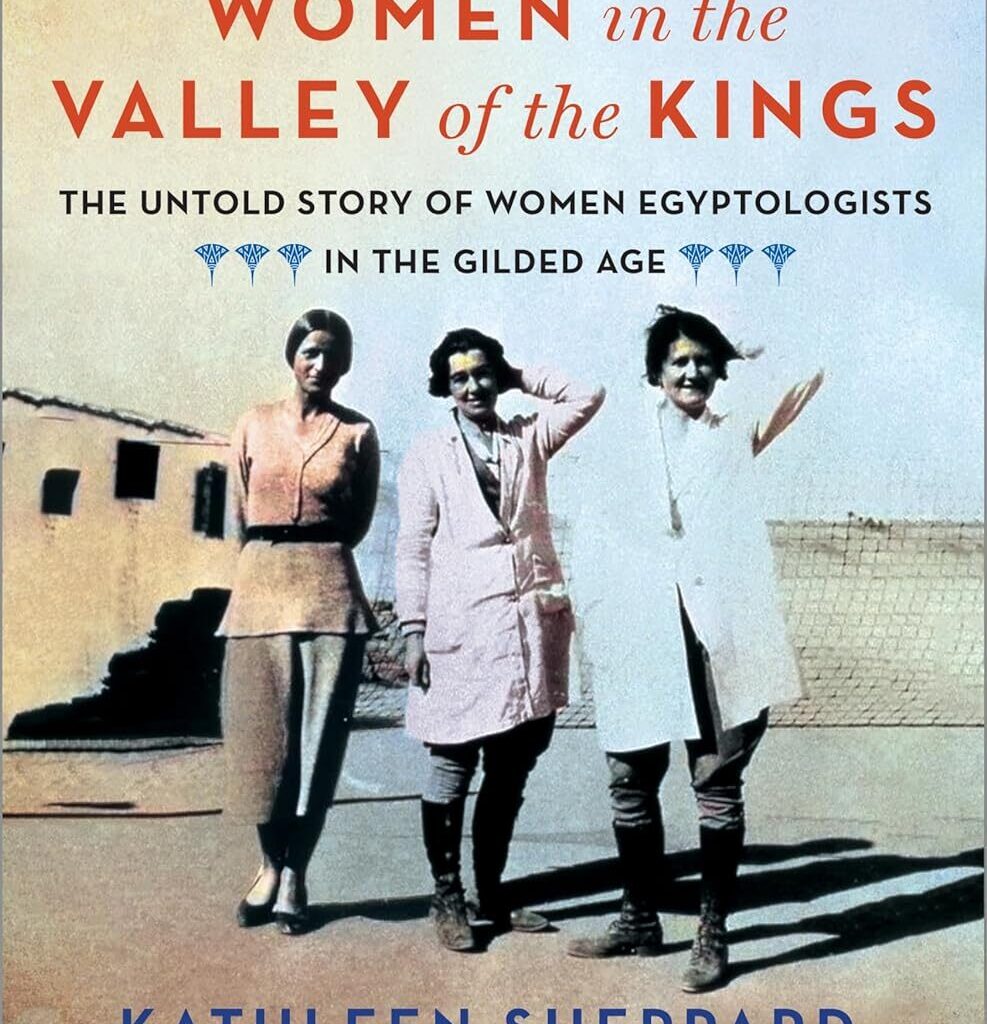
Unveiling the Hidden Histories: Kathleen Sheppard’s “Women in the Valley of the Kings”
In “Women in the Valley of the Kings,” Kathleen Sheppard sheds light on the untold stories of pioneering women who made significant contributions to Egyptology during the late 19th and early 20th centuries. This compelling narrative not only highlights their achievements but also explores the challenges they faced in a predominantly male-dominated field. With a captivating blend of biography and history, Sheppard invites readers to discover how these remarkable women navigated societal constraints and carved their paths in the world of archaeology.
Summary
“Women in the Valley of the Kings” is structured into seven chapters, each focusing on different women, either in pairs or individually, who ventured into the field of Egyptology. The book spans a period from the late 1800s to the mid-20th century, exploring how these women, often unaware of their future impact, blazed trails in a field that had been largely male dominated.
The narrative begins with a historical context that sets the stage for the emergence of these female Egyptologists. During the Gilded Age, a time marked by significant social and cultural shifts, women began to break free from traditional roles, seeking education and careers in fields that had previously excluded them. The book emphasizes the importance of their contributions to the study of ancient Egypt, often overshadowed by their male counterparts.
Key Events and Main Characters
The book introduces several key figures, each with unique stories and contributions to Egyptology:
- Amelia Edwards: A novelist and pioneering Egyptologist, Edwards was instrumental in advocating for the preservation of Egyptian antiquities. Her writings helped raise awareness about the importance of Egypt’s cultural heritage.
- Marianne Brocklehurst: A wealthy patron of the arts, Brocklehurst supported various archaeological expeditions and contributed significantly to the field through her financial backing.
- Maggie Benson and Nettie Gourlay: These two women were known for their collaborative efforts in documenting and preserving Egyptian artifacts, showcasing the importance of teamwork in their endeavors.
- Emma Andrews: A writer and researcher, Andrews played a crucial role in promoting Egyptology through her publications and lectures, helping to popularize the field among the general public.
- Margaret Alice Murray: An influential figure in the study of ancient Egyptian religion, Murray’s work laid the groundwork for future research in the field.
- Kate Griffin and Emily Paterson: This duo exemplified the spirit of adventure, often traveling together to excavate sites and conduct research, demonstrating the camaraderie among women in the field.
- Myrtle Broome and Amice Calverley: Their contributions focused on the administrative aspects of archaeology, ensuring that findings were properly documented and preserved for future generations.
- Caroline Ransom Williams: A significant figure in the establishment of museums and exhibitions, Williams helped curate collections that showcased the richness of Egyptian culture.
These women, among others, faced numerous obstacles, including societal prejudice, limited access to education, and the challenges of traveling alone in a foreign country. Despite these hurdles, they persevered, often relying on each other for support and encouragement.
Plot
The narrative arc of “Women in the Valley of the Kings” unfolds as Sheppard chronicles the journeys of these women, detailing their early lives, education, and eventual forays into Egyptology. The book highlights their individual motivations for pursuing this field, whether it was a passion for history, a desire for adventure, or a commitment to preserving cultural heritage.
As the story progresses, readers witness the evolution of these women’s roles within the archaeological community. They began as assistants or patrons, gradually gaining recognition for their contributions. Sheppard emphasizes the collaborative nature of their work, showcasing how these women often relied on each other for support, forming networks that would prove invaluable in their endeavors.
The book also addresses the broader societal changes occurring during this period, including the shifting attitudes towards women’s roles in academia and professional fields. Sheppard illustrates how these women not only defied societal norms but also paved the way for future generations of female archaeologists.
Themes
Several key themes emerge throughout “Women in the Valley of the Kings”:
- Female Empowerment: The book celebrates the resilience and determination of women who defied societal expectations to pursue their passions. Their stories serve as a testament to the power of perseverance in the face of adversity.
- Collaboration and Community: Sheppard highlights the importance of collaboration among women in the field. Many of the women profiled found strength in their relationships with one another, creating a supportive network that fostered their success.
- Cultural Preservation: A significant theme in the book is the women’s commitment to preserving Egypt’s cultural heritage. Unlike their male counterparts, who often focused on excavation for profit, these women prioritized the protection of archaeological sites and artifacts.
- Challenging Gender Norms: The narrative challenges traditional gender roles by showcasing women who not only participated in but also shaped the field of Egyptology. Their contributions demonstrate that women can excel in fields historically dominated by men.
- Intersection of Personal and Professional Lives: Sheppard delves into the personal lives of these women, exploring how their relationships and experiences influenced their professional journeys. This intersection adds depth to their stories, illustrating the complexities of balancing personal aspirations with societal expectations.
Conclusion
“Women in the Valley of the Kings” is a groundbreaking work that shines a light on the often-overlooked contributions of women in the field of Egyptology. Kathleen Sheppard’s meticulous research and engaging storytelling bring to life the stories of these remarkable women, celebrating their achievements and resilience in the face of adversity.
Through the lens of these pioneering figures, readers gain a deeper understanding of the challenges faced by women in the late 19th and early 20th centuries, as well as the significant impact they had on the study of ancient Egypt. The book serves as a reminder of the importance of recognizing and honoring the contributions of women throughout history, particularly in fields where their voices have been marginalized.
In conclusion, “Women in the Valley of the Kings” is not just a historical account; it is a celebration of female empowerment, collaboration, and the enduring legacy of women who dared to challenge the status quo. Sheppard’s work is a must-read for anyone interested in Egyptology, women’s history, or the broader narrative of social change. By illuminating the lives of these extraordinary women, Sheppard invites us to reflect on the ongoing struggles for gender equality and the importance of preserving cultural heritage for future generations.
Read Full Novel
Women in the Valley of the Kings


